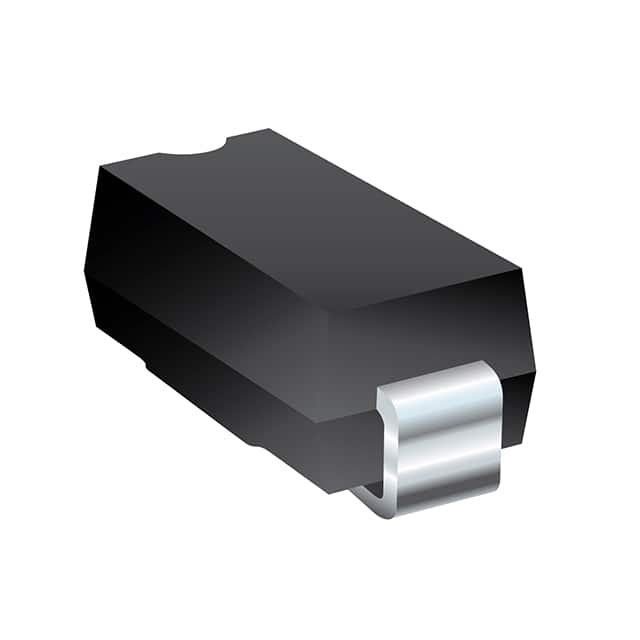Xem thông số kỹ thuật để biết chi tiết sản phẩm.

SMAJ100CA - Product Overview
Introduction
The SMAJ100CA is a diode belonging to the category of transient voltage suppressors (TVS). It is commonly used to protect sensitive electronic components from voltage spikes and transients. This entry provides an overview of the SMAJ100CA, including its basic information, specifications, pin configuration, functional features, advantages and disadvantages, working principles, application field plans, and alternative models.
Basic Information Overview
- Category: Transient Voltage Suppressor (TVS)
- Use: Protecting sensitive electronic components from voltage spikes and transients
- Characteristics: Fast response time, low clamping voltage, high surge current capability
- Package: DO-214AC (SMA), SMC
- Essence: Silicon junction diode
- Packaging/Quantity: Available in tape and reel packaging, with varying quantities
Specifications
- Part Number: SMAJ100CA
- Peak Pulse Power: 400W
- Breakdown Voltage: 100V
- Operating Temperature Range: -55°C to +150°C
- RoHS Compliant: Yes
Detailed Pin Configuration
The SMAJ100CA has two pins: 1. Anode (A) 2. Cathode (K)
Functional Features
- Fast response to transient over-voltage
- Low clamping voltage
- High surge current capability
- RoHS compliant
Advantages and Disadvantages
Advantages
- Effective protection against voltage spikes
- Fast response time
- RoHS compliant
Disadvantages
- Limited to specific voltage range
- May require additional circuitry for comprehensive protection
Working Principles
The SMAJ100CA operates by diverting excess current away from sensitive components when a voltage spike occurs. When the voltage exceeds the breakdown voltage, the diode conducts, providing a low-impedance path for the transient current to flow through, thus protecting the downstream components.
Detailed Application Field Plans
The SMAJ100CA is widely used in various applications, including: - Power supplies - Telecommunication equipment - Automotive electronics - Industrial control systems - Consumer electronics
Detailed and Complete Alternative Models
Some alternative models to the SMAJ100CA include: - P6SMB100CA - 1.5SMC100CA - SMBJ100CA - SMCJ100CA
In conclusion, the SMAJ100CA is a vital component in safeguarding electronic circuits from voltage transients and spikes. Its fast response time, low clamping voltage, and high surge current capability make it an essential part of modern electronic designs.
Word count: 386
Liệt kê 10 câu hỏi và câu trả lời thường gặp liên quan đến ứng dụng SMAJ100CA trong giải pháp kỹ thuật
What is SMAJ100CA?
- SMAJ100CA is a transient voltage suppressor diode, commonly used to protect electronic circuits from overvoltage transients.
What is the maximum peak pulse power of SMAJ100CA?
- The maximum peak pulse power of SMAJ100CA is 400 watts.
What is the breakdown voltage of SMAJ100CA?
- The breakdown voltage of SMAJ100CA is 100 volts.
How does SMAJ100CA protect electronic circuits?
- SMAJ100CA clamps the voltage during transient events, diverting excess current away from sensitive components and preventing damage.
In what applications is SMAJ100CA commonly used?
- SMAJ100CA is commonly used in power supplies, telecommunications equipment, automotive electronics, and industrial control systems.
What is the response time of SMAJ100CA?
- The response time of SMAJ100CA is very fast, typically responding within nanoseconds to transient voltage spikes.
Can SMAJ100CA be used for ESD protection?
- Yes, SMAJ100CA can be used for electrostatic discharge (ESD) protection in electronic circuits.
What is the operating temperature range of SMAJ100CA?
- The operating temperature range of SMAJ100CA is typically -55°C to 150°C.
Is SMAJ100CA RoHS compliant?
- Yes, SMAJ100CA is RoHS compliant, meaning it meets the Restriction of Hazardous Substances directive.
How should SMAJ100CA be mounted on a PCB?
- SMAJ100CA should be mounted close to the protected circuit, with short traces to minimize inductance and maximize its effectiveness.

